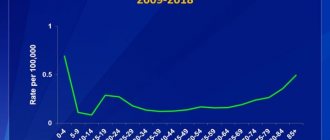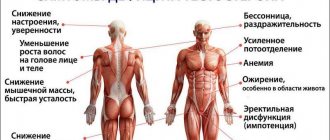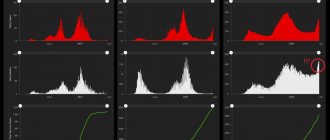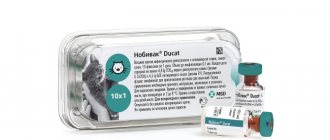Home — For the public
- Map of medical organizations
- Vaccination
- Clinical examination
- Fluorography
- Addresses and opening hours of clinics
- Emergency rooms
- Oncology
- Where to take an HIV test
- Healthy child's office
- Services
- Prevention of CVD
- Disease Prevention
- World Patient Safety Day
- Newspaper "Medical News"
- specialist
- School of Health
— All about vaccination
- Appeal to parents
- Opening hours for vaccination clinics in Yekaterinburg
- Opening hours of vaccination clinics in the Sverdlovsk region
- Vaccinations: I want to know everything
- Child vaccination
- Regional vaccination calendar for adults
— Vaccinations: I want to know everything — How does vaccination help build immunity?
Every second a person encounters hundreds of bacteria and viruses that can lead to one or another disease. In addition, atypical cells constantly appear in the body, the further proliferation of which becomes the cause of malignant formations. Immunity is a defense mechanism. It protects against bacteria, viruses, and recognizes foreign tumor cells.
The immune system is represented by organs such as: lymph nodes, spleen, thymus and special blood cells. It performs the following tasks:
- recognizes bacteria or viruses that have entered the body;
- begins the synthesis of antibody proteins;
- remembers the pathogen in order to “fight it back” in the future.
Blood elements play an important role in protection: phagocytes, T- and B-lymphocytes. Each group of cells does its own job.
Phagocytes are the first cells to appear at the site of infection. They capture, absorb and digest foreign agents. They cope only with fairly “weak” aggressors, whose visit takes place for a person without any symptoms.
Digesting “foreigners,” phagocytes release substances called cytokines, which attract more serious artillery to the focus—lymphocyte cells. There are 2 main groups of lymphocytes.
B lymphocytes synthesize 5 groups of immunoglobulin proteins. For protection against a specific infection, types M and G are important. Immunoglobulins are stored in the body and protect a person from repeated cases of the disease for a long time. Vaccination uses immune memory: a person is injected with antigens or weakened pathogens. If there is a second attack, the defense mechanism is activated immediately.
T-lymphocytes perform different tasks: one group helps B-lymphocytes synthesize antibodies, the second destroys diseased or atypical cells of the body itself, and the third strengthens or weakens the immune response.
What is active and passive immunity
A person can obtain antibodies in various ways. Antibodies enter the body passively through the placenta during pregnancy, with mother's milk after birth, or during emergency immunization with ready-made immunoglobulins. Such immunity is unstable and needs to be “renewed” quickly: antibodies protect only while they circulate in the bloodstream. They do not reproduce on their own.
Active immunity occurs after an infectious disease or vaccination, since entry into the body of the pathogen itself or its fragments triggers the formation of new colonies of B-lymphocytes. These cells quickly synthesize antibodies and protect the body. So a person either does not get sick or suffers the infection easily.
The duration of active protection depends on the type of pathogen, so a person can suffer some diseases only once, while others occur repeatedly. The same statement is true for vaccinations: some vaccines are administered 1-2 times throughout life (for example, measles, rubella vaccination), while others require revaccination after a certain period of time (for example, diphtheria, tetanus - every 10 years).
BIOLOGICAL DEPARTMENT OF THE CENTER OF TEACHING EXCELLENCE
Author of the article Zybina A.M.
Thanks to the presence of the immune system, the body is protected from most pathogens (viruses, bacteria, fungi, protozoa, helminths, etc.) and the toxic products of their vital activity. Thus, immunity is aimed at protecting the body, maintaining its integrity and individuality.
Immunity can be divided into cellular and humoral. Cellular immunity is provided by leukocytes during their direct contact with the pathogen (phagocytosis, damage to the pathogen, etc.). Humoral immunity is provided by protein factors produced by cells. These include antibodies and the complement system.
Rice. 1. Types of immunity.
By function, immunity is divided into innate and acquired. Innate immunity involves characteristics of an individual or species that provide protection against pathogens. For viruses and bacteria to penetrate the body and cells, the presence of special proteins on the membrane is necessary. Such proteins are most often species-specific, so most of the diseases from which animals suffer are not terrible for humans. Even within a single species, there are individual differences in proteins that can render part of the population immune to disease.
Acquired active immunity occurs through exposure to a pathogen and subsequent production of antibodies. It can occur naturally (disease) or artificially (vaccine). In any case, memory cells remain and repeated contact with the pathogen will no longer cause the disease. Antibodies can also be obtained passively: through mother's milk or in the form of serum. They protect the body as long as they circulate in the blood. In this case, memory cells are not preserved and infection is possible upon repeated contact with the pathogen.
Immunity is provided by white blood cells - leukocytes. All of them are formed in the red bone marrow. Leukocytes are usually divided into granulocytes and agranulocytes.
Granulocytes include neutrophils, basophils and eosinophils. All of them contain a large number of granules in the cytoplasm, which store substances necessary to fight pathogens. The name granulocytes is associated with the dyes that stain the granules (hematoxylin - basic, eosin - acidic). In addition, they are capable of phagocytosis of small particles.
Neutrophils (Fig. 2 a, d) make up 93-96% of all blood leukocytes. They have a segmented (3-5 segments) nucleus and stain with both hematoxylin and eosin. They are capable of both phagocytosis of small particles and the formation of reactive oxygen species. Neutrophils can live and fight pathogens even under anaerobic conditions. They are localized in the blood and foci of inflammation, and participate in the formation of pus. Effective against fungus, bacteria and protists.
Eosinophils (Fig. 2 b, e) have a segmented nucleus (2 segments) and are stained with eosin. They provide anthelmintic immunity (they release toxic substances and reactive oxygen species from granules near the parasite). They also effectively protect the body from protozoa. Capable of recycling, that is, returning to the blood from tissues.
Rice. 2. Photographs (a-c) and schematic structure (d-e) of neutrophil (a, d), eosinophil (b, e) and basophil (c, f).
Basophils (Fig. 2 c, e) make up 0.5-1% of blood leukocytes. They have an S-shaped nucleus and their cytoplasm is densely packed with granules that stain with hematoxylin and contain a lot of heparin and histamine. Basophils are able to integrate IgE into the membrane, thereby specifically binding and attacking the pathogen. All these features are also characteristic of mast cells, which is why basophils were previously considered their precursors. However, it has now been established that mast cells have a different origin. Basophils are involved in the implementation of the anthelmintic response. They release inflammatory mediators and increase vascular permeability, which additionally attracts other immune cells. Participate in immediate allergic reactions.
Agranulocytes are divided into monocytes and lymphocytes.
Rice. 3. Photograph (a) and schematic structure (b) of monocytes.
Monocytes (Fig. 3) are the most active leukocytes in the blood. They have a cell with a large bean-shaped nucleus. Passing into tissues, they turn into macrophages - professional phagocytes. Macrophages are capable of absorbing even very large particles. The membrane of these cells contains Toll-like receptors, which allow them to recognize and destroy conservative structures of the membrane and cell wall of microorganisms. If macrophages are not able to absorb a foreign particle, they stick around it on all sides and merge, isolating the particle from the body. Macrophages absorb not only pathogens, but also the remains of dead body cells. In addition, they are antigen-presenting cells.
Lymphocytes have a variety of functions. T- and B-lymphocytes are isolated. Both types of lymphocytes are formed in the red bone marrow. However, their maturation takes place in different places: T-lymphocytes in the thymus, B-lymphocytes in the red bone marrow. T-lymphocytes are divided into T-killers and T-helpers. Lymphocytes also include natural killer cells. Like all immune cells, they are formed in the red bone marrow, however, the location of their maturation is still in question. Lymphocyte maturation occurs in childhood, after which all lymphocytes are predominantly localized in the lymph nodes and spleen.
B lymphocytes provide humoral acquired immunity and are the source of antibodies in our body. Antibodies (immunoglobulins, Ig) are protein compounds in blood plasma (γ-globulins) formed in response to the introduction of bacteria, viruses, protein toxins and other antigens into the human body. By binding with active sites (centers) to bacteria or viruses, antibodies prevent their reproduction or neutralize the toxic substances they release. In addition, antibodies are a kind of “tag” for immune cells that the particle they have attached to needs to be absorbed. In this case, antibodies recognize only macromolecules foreign to the body.
Antibodies consist of two identical heavy chains (H-chain) and two identical light chains (L-chain) (Fig. 4a). Oligosaccharides are covalently attached to the heavy chains. Each chain has constitutive (Fc) and variable (Fab) fragments.
The constitutive fragment is conserved and is necessary for the interaction of the antibody with immune cells. Basophils and mast cells integrate ready-made antibodies into the membrane and use them as a receptor, which allows them to quickly and violently react to a pathogen when it is bound by a membrane antibody. B lymphocytes integrate antibodies into their own membrane of the specificity that they themselves produce. When the pathogen binds to membrane immunoglobulin, activation of the B lymphocyte becomes possible. When free (not embedded in the membrane) antibodies attach to a pathogen, macrophages and other immune cells can interact with the constitutive fragment of the antibody. This will serve as a signal to destroy the tagged molecule or organism.
The variable fragment of the antibody is individual for each B lymphocyte. It is this site (idiotope) that binds to the pathogen. Moreover, antibodies from different B-lymphocytes can attach to different areas of the same pathogen; antibodies from one B-lymphocyte always bind one area (epitope) (Fig. 4 b). Due to the variability of these fragments, up to 108 antibody variants can exist in the body of one person.
Since the formation of the Fab fragment is random in each B lymphocyte, they undergo selection during maturation in the red bone marrow. As mentioned earlier, these cells integrate immunoglobulins into the membrane and use them as a receptor. B cells, whose immunoglobulin receptors are capable of interacting with self-antigens, either die as a result of apoptosis or become unresponsive (anergic). Thus, only cells that do not respond to their own antigens remain active.
Rice. 4. Antibody structure (a) and its binding to various antigen epitopes (b).
However, contact (binding with the receptor) with a pathogen alone is not enough to activate a mature B lymphocyte. Antigen presentation must occur.
Antigen presentation is carried out by special antigen-presenting cells (APC), which include macrophages and dendritic cells (Fig. 5), while the B lymphocyte must receive a signal for activation from the T helper cell. Cell interaction occurs through a number of membrane proteins. In addition to immunoglobulin, it involves the major histocompatibility complex, the T-cell receptor and a number of coreceptors.
Rice. 5. Interaction between an antigen-presenting (dendritic) cell and a lymphocyte.
All cells of the body have special glycoproteins on their surface - the major histocompatibility complex (MHC, HLA). This glycoprotein exists in two versions. MHC II has APCs and B-lymphocytes, MHC I has all other cells, including somatic cells. This complex is individual and has approximately 2000 allelic genes. Inside each cell, proteins and other polymers are constantly renewed. Old molecules are destroyed and their fragments are “laid out” on the surface of the GCG. During the process of maturation, immune cells “learn” to recognize their MHC and the proteins that are on it. Thus, MCGs are the “passport” of the cell and show not only its belonging to a given organism, but also what is happening inside the cell.
T lymphocytes detect pathogens using their T-cell receptors (TCR, T-cell receptor, TCR). This is a membrane protein responsible for recognizing processed antigens associated with molecules of the major histocompatibility complex (Fig. 6). This receptor, like antibodies, has a constitutive and variable region. The constitutive region is associated with the membrane of T-lymphocytes, the variable region is necessary for the recognition of MHC, an antigen, and it is individual for each T-lymphocyte.
Rice. 6. Interaction between the T-cell receptor and the major histocompatibility complex.
For the normal functioning of T-lymphocytes, when maturing in the thymus, they undergo a complex two-stage selection. At the first stage, only those T lymphocytes survive that remain capable of binding to the MHC variable region of the TCR (positive selection). In the second, T-lymphocytes are destroyed, which are activated in response to their own antigens “laid out” on the MCG. In parallel with this, differentiation into T-killers and T-helpers occurs. T-killers must interact with MHC I, the membrane protein CD4 acts as a coreceptor for such interaction, and it is a marker of T-killers. Helper T cells must bind to MHC II, and the CD8 protein acts as a coreceptor and marker.
If the selection of T- and B-lymphocytes is not strict enough, and there are cells that react to the body’s own antigens, then the immune system can begin to attack its own cells, which will lead to the occurrence of autoimmune diseases.
Antigen presentation to B lymphocytes is a complex process in which T helper cells and APCs take part. A B lymphocyte that has not interacted with its antigen is called naive. If the antigen interacts with the membrane antibody of the B-lymphocyte, then the antibody is internalized with the antigen, the antigen is destroyed into fragments, and they are laid out on MHC II. At this time, the macrophage or dendritic cell must also take up the antigen. They digest it and put it on GKG II. T-helper must interact with MHC II on the surface of the APC, after which it is activated. Only after this, the T lymphocyte can interact with MHC II on the surface of the B lymphocyte, which is activated and turns into a plasma cell. The plasma cell proliferates and creates clones that synthesize antibodies of the same specificity as the original lymphocyte. Thus, the immune response is strengthened. It is worth noting that one pathogen has many epitopes, as a result of which many B lymphocytes with different specificities are activated. Some B lymphocytes, after contact with a pathogen, turn into memory cells that persist after the disease, and their activation occurs much faster upon repeated contact with the antigen.
Rice. 7. Antigen presentation. Top: foreign antigen (1) is captured and absorbed by the antigen-presenting cell (2), which cleaves it and partially displays it on its surface in complex with MHC II molecules (3). Below, the entire foreign antigen is bound by surface antibodies (5) of the B-lymphocyte (6), is also absorbed and processed by it (7), after which part of the foreign molecule is presented in complex with MHC II molecules (8). After contact (10) with a T-lymphocyte (helper, 4), already activated by an antigen-presenting cell (2), the B-lymphocyte begins to secrete antibodies into the blood (9).
Killer T cells are responsible for cellular immunity. They play an important role in protecting the body against viruses and tumors. Killer T cells interact with MHC I of all cells and destroy the cell when a foreign MHC or a fragment of a foreign antigen is detected on the MHC. Thus, they destroy cancer cells and intracellular parasites. Killer T cells play an important role in organ transplantation, because it is these cells that attack foreign tissue of the transplanted organ. Therefore, during transplantation, they try to select an organ donor whose cells have the most similar MCG to the patient’s MCG.
Killer T cells interact with the cell through the MHC, and if it is absent, the cell remains invisible to this system. Therefore, cells without MHC are destroyed by natural killer cells. Thus, they provide antitumor protection.
In addition to lymphocytes, the blood plasma contains proteins that can recognize the bacterial cell wall and self-assemble into pores, as a result of which the ionic balance of the cell is disrupted and it dies. Such proteins belong to the complement system. They are synthesized by the liver and belong to the group of globulins.
The presence of antibodies or complement system proteins on the surface of the antigen is a signal for macrophages to phagocytose the foreign particle.
Manifestations of immunity are varied and include many cells and proteins. It provides effective protection of the body from various types of infections. However, acquired immunity is an evolutionarily new system that is present only in vertebrates. That is why there are frequent cases of incorrect functioning of the immune system, which can lead to various pathologies, for example, allergies, tumors and autoimmune diseases.
Vaccines and vaccine-preventable diseases
There are a huge number of viruses and bacteria dangerous to humans in the world. Thanks to vaccination, some diseases (for example, smallpox) were defeated. Other infections are under control - pathogens circulate in the environment, but outbreaks and epidemics rarely occur.
Unfortunately, infections cannot be prevented with proper nutrition, hardening, etc. Vaccination is the only way to protect children and adults from the disease.
The following are common vaccine-preventable diseases:
- Tuberculosis. It affects the lungs and bronchi, less commonly the joints and the genitourinary system. Dangerous due to the development of generalized forms, meningitis. Mycobacterium tuberculosis is extremely resistant to most drugs.
- Whooping cough is a disease that affects the respiratory tract. The toxins of the pathogen irritate the cough center, provoking attacks of painful coughing with respiratory arrest and vomiting. May be complicated by brain damage or episyndrome.
- Diphtheria is a disease in which toxins from the pathogen circulate in the blood, having a detrimental effect on the cardiovascular and nervous system. More often, patients develop croup - a dense film on the tonsils that blocks the lumen of the respiratory tract. Complications include shock, paralysis of the soft palate, damage to the heart and kidneys.
- Poliomyelitis is an acute intestinal infection that affects the central nervous system. Breathing is impaired, paresis and paralysis develop. The changes are permanent; more than 80% of those who have recovered from the disease remain disabled. It is almost impossible to cure this disease.
- Measles is an extremely contagious viral disease. It affects the respiratory tract with the development of bronchitis, false croup, and pneumonia. The central nervous system often suffers - meningitis, encephalitis. Deafness may develop. There is no specific treatment for measles, and the mortality rate among unvaccinated children is high.
- Rubella is a viral infection characterized by skin rash, swollen lymph nodes, and fever. It is most dangerous for expectant mothers - infection leads to severe developmental defects (heart defects, deafness).
- Tetanus is an infectious disease in which bacterial toxins have a toxic effect on the nervous system. Death occurs from respiratory paralysis, sepsis, myocardial infarction. Mortality is high. The entry gate is damaged skin (wounds, abrasions, etc.) - this means that anyone can accidentally become infected.
- Mumps (“mumps”) is an inflammation of the parotid salivary glands. Children get sick more often; can be severe - every tenth person develops meningitis, and hearing loss is possible. Boys who have had mumps often experience inflammation of the testicle, which leads to impaired fertility.
- Viral hepatitis B spreads through sexual contact, household contact, medical procedures, and the placenta. The disease in 60-90% is chronic and leads to cirrhosis or primary liver cancer.
Antibody-mediated immunity—an example of RSV infection
Are antibodies necessary?
In children without antibodies (X-linked agammaglobulinemia), no severe course of RSV infections has been described. Also in a mouse model, animals lacking B cells exhibited virus clearance kinetics comparable to those of immunocompetent animals. As with most viruses, antibodies also play no role in primary RSV infection. Interestingly, upon secondary infection of B-cell-deprived animals, the virus was very quickly eliminated. This, however, is often associated with a more severe course of the disease. Antibodies are thus not necessarily required for protective immunity against RSV. It is clear that balanced B and T cell immunity is required to not only prevent viral spread but also to prevent clinical disease. However, a correlation between maternal levels of RSV neutralizing antibodies and severity of childhood illness following infection has not been found in all studies. Protection against RSV disease by antibodies becomes more evident with the prophylactic action of RSV-specific antibodies such as Respigam or Palivizu-mab. When taken regularly, Palivizumab (neutralizing IgG antibodies against RSV surface protein) was able to reduce the rate of RSV-related rehospitalizations in premature infants by 50%. Whether these results can be improved by optimizing the antibodies and their administration (dose and interval) is currently being intensively studied. The fact that even after natural RSV infection, despite high levels of neutralizing antibodies, RSV reinfection is possible, coupled with the limited effectiveness of maternal or transfused antibodies, rather argues against the idea that antibodies alone are sufficient.
Why do antibodies have limited effectiveness? As mentioned above, once the virus infects the target cell, the antibodies then remain ineffective. In addition, RSV, as a result of cell fusions, can spread from cell to cell, without the need for an extracellular phase. Whether IgA is probably more effective than IgG is not well known. In a mouse model, however, intratracheally administered RSV-specific IgA was less effective than IgG. There is no indication that patients with IgA deficiency suffer more frequently or more severely from RSV disease.
Can B cell immunity be induced in the presence of antibodies?
It is an important question for any vaccine that is given during the first months of life whether it, even in the presence of maternal antibodies (or in the case of RSV, even in the presence of prophylactically administered antibodies), can induce an adequate memory response. In this regard, there is good evidence from a mouse model that the presence of maternal antibodies prevents the live RSV vaccine from sufficiently activating infant B cells. During reinfection, there is no longer a sufficient level of neutralizing antibodies that can quickly resist viral replication.
How do T cells mediate antiviral immunity?
T cells are lymphocytes that, through highly specialized receptors, can recognize infected target cells. All nucleated cells have an enzymatic apparatus that can break down intracellularly synthesized proteins into peptide fragments. These fragments can bind to the MHC molecule and be transported to the cell surface.
Thus, the virus-infected cell presents viral fragments to T cells (Fig. 4). Contact of T-cell receptors with a complex of MHC and viral peptide leads, in combination with costimulatory signals, to activation of T-cells. What does clonal proliferation, differentiation and activation of antiviral effector mechanisms include? T cells mediate antiviral effector functions through the secretion of cytokines such as interferon-β and tumor necrotizing factor (TNF) or contact-dependent cytotoxicity (Fig. 5). These cytokines can either induce receptor-mediated intracellular antiviral effector mechanisms or activate other effector cells, such as macrophages. CD4+ T cells act primarily through cytokines, while CD8+ T cells generally exhibit cytotoxic function. An important molecular mechanism in this case is perforin-mediated induction of cell death; CD95-mediated apoptosis probably plays a lesser role in the control of viral infection. T cells cannot recognize free viruses in this way, but are capable of creating sterilizing immunity through the recognition and destruction of infected cells.
The study of antiviral T cells and their functions in humans, despite significant methodological progress achieved in recent years, is not yet satisfactory. Although, thanks to the use of MHC peptide tetramers or the ELISPOT method, it has become possible to count antiviral T cells. Particularly with regard to vaccine immunity, there are no well-measurable parameters that indicate whether a vaccine has sufficiently induced T-cell immunity to protect against clinical disease.
Important information about vaccination
When thinking about whether to vaccinate themselves or their children, adults worry about the safety of the drugs, are interested in possible contraindications, and believe that the national calendar is “overloaded.”
How safe are vaccines? Vaccines usually contain the following components:
- Antigen. This can be a live, killed form of a virus, bacteria or fragments of a pathogen. This component “teaches” the immune system to recognize the enemy and produce antibodies against it.
- Preservatives and stabilizers to protect antigens during transportation or storage. There are vaccines without preservatives; they are used in pediatric practice.
- Some drugs contain adjuvant substances that enhance the immune response.
Each vaccine goes through several stages of clinical research: safety, metabolism, methods of elimination, frequency and severity of undesirable effects are studied. Next, immunogenicity is assessed - the ability to stimulate the synthesis of antibodies in response to administration. This parameter indicates the effectiveness of the drug and is estimated as a percentage. For example, when a flu vaccine is administered, antibodies are produced in 95% of those vaccinated. The higher the immunogenicity, the greater the likelihood that the population will be protected from an epidemic of the disease.
A safe and effective vaccine can be allowed into mass production and recommended for use. After drug approval, clinicians continue to monitor for adverse effects.
Popular hypotheses about the connection between vaccinations and diseases such as autism, cerebral palsy, and epilepsy have no scientific confirmation. Often, severe mental and neurological disorders first manifest themselves after 1 year of age, regardless of whether the baby has been vaccinated or not.
Does stress affect immunity?
Yes, it influences in some way, but this mechanism is much more complex than many people think. If you just get nervous or even undergo some kind of complex psychologically traumatic situation, this most likely will not worsen your immune system in a noticeable way. The body, as a rule, adapts to stress loads. But being in a stressful situation for long periods of time can really affect the immune system. The question of exactly how the level of psychological stress, the immune system and morbidity are interconnected has not yet been sufficiently studied.
Can multiple vaccines be administered at the same time?
Mothers of infants worry that vaccinations “kill” their own immunity and can cause harm if administered simultaneously. In reality, every person encounters tens and hundreds of bacteria and viruses every day, and his immune system successfully copes with them.
Two-, three-, four-, and five-component vaccines are well tolerated by children and help develop immunity by the time the kids attend preschool institutions, clubs or sections. You can get complete information about the procedure for administering drugs from your pediatrician.
What about vitamins and healthy yoghurts?
Vitamins as such are really needed for immunity. Thus, vitamins A, C, D, E and B6 are actively involved in immune processes; when they are insufficient, the activation of T and B lymphocytes is impaired. But this does not mean that multivitamins can help boost immunity: Synthetic vitamins are absorbed worse than those we get from food, so WHO recommends taking individual vitamins only if they are deficient, and in general, just eating well.
It has been proven that vitamin C also does not have protective or immunomodulatory effects and is not able to protect against ARVI or improve its course.
Lactobacilli and other probiotics contained in yogurts do not strengthen the immune system and do not help us get sick less. These bacteria simply do not stay in the intestines: they decompose in an acidic environment in 1-2 days.
When should you refrain from vaccination?
Some people should delay vaccination or avoid it entirely. Temporary contraindications include:
- treatment of cancer (course of chemotherapy);
- decompensation of severe chronic diseases;
- acute infectious diseases;
- pregnancy and breastfeeding (but not all vaccines, for example against influenza, can be vaccinated in the 2-3 trimester of pregnancy);
- period less than 1 month from the last vaccination.
But there are also conditions in which vaccination can cause harm to health. This:
- autoimmune diseases;
- epilepsy, convulsive syndrome;
- allergy to vaccine components;
- poor tolerability of the previous dose of the vaccine.
Before administering the drug, the doctor examines the patient, measures body temperature, and collects an epidemiological history.
Disadvantages of passive immunization
- Antibodies are expensive to produce, but new technologies can help produce them in the laboratory, especially antibodies to infectious diseases, which must be collected from the blood of thousands of donors or even obtained from the blood of immune animals.
- Animal antibodies can cause severe allergic reactions in the recipient.
- The antibodies must be given by intravenous injection, which can be a complicated procedure and takes longer than a vaccine injection.
- The immunity provided by passive immunization is short-lived, that is, it does not lead to the formation of long-term memory immune cells.
Is it possible to get vaccinated during pregnancy?
Pregnancy in itself is not a contraindication for vaccination. A distinction should be made between routine and emergency vaccinations.
Seasonal influenza vaccination is routinely recommended. So the flu vaccine is not only allowed, but also recommended. It reduces the likelihood of a baby getting sick in the first six months of life by 60-65%.
In an emergency, therapeutic and prophylactic vaccination against rabies is possible in case of animal bites. The doctor weighs the dangers of vaccination against the risk of developing a deadly disease.
Vaccination is the most effective and safe way to protect adults and children from dangerous infections. The list of recommended vaccines is indicated in the National Vaccination Calendar. You can find out more information about the procedure for administration, rules for preparing for vaccination and possible undesirable effects from your doctor.
Does hardening strengthen the immune system?
No, it does not strengthen. But it is useful for other reasons. An organism accustomed to the effects of cold does not perceive an occasional draft as an emergency mode of “hypothermia,” since its blood vessels are in good tone and quickly respond to temperature changes. Vasospasm does not occur, blood supply to the mucous membrane of the respiratory tract does not decrease, and opportunistic microorganisms living in our nasopharynx are not activated. This means that where an unseasoned person “catch a cold,” a seasoned person will not get sick. At the same time, both can become infected with ARVI with absolutely the same probability.








